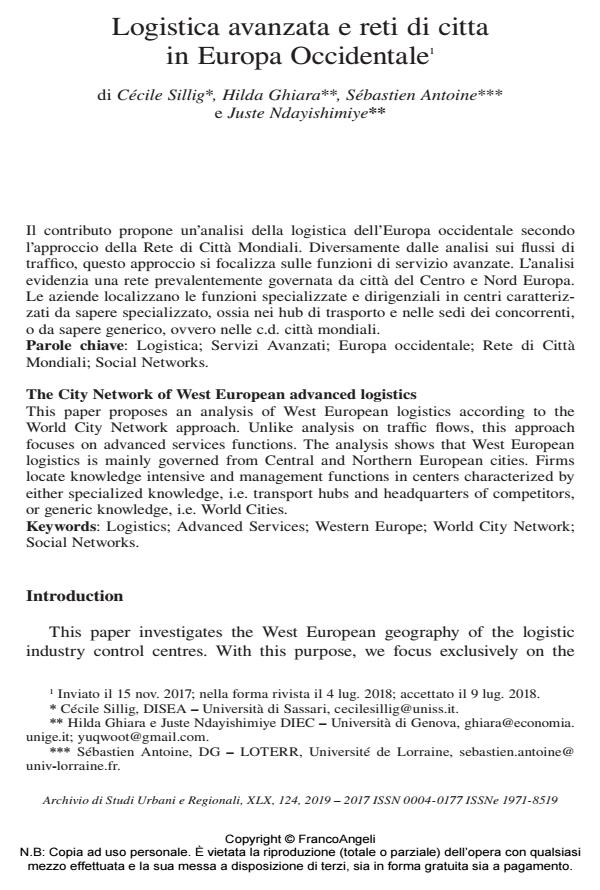Logistica avanzata e reti di citta in Europa Occidentale
Titolo Rivista ARCHIVIO DI STUDI URBANI E REGIONALI
Autori/Curatori Cécile Sillig, Hilda Ghiara, Sébastien Antoine, Juste Ndayishimiye
Anno di pubblicazione 2019 Fascicolo 2019/124
Lingua Italiano Numero pagine 26 P. 96-121 Dimensione file 185 KB
DOI 10.3280/ASUR2019-124005
Il DOI è il codice a barre della proprietà intellettuale: per saperne di più
clicca qui
Qui sotto puoi vedere in anteprima la prima pagina di questo articolo.
Se questo articolo ti interessa, lo puoi acquistare (e scaricare in formato pdf) seguendo le facili indicazioni per acquistare il download credit. Acquista Download Credits per scaricare questo Articolo in formato PDF

FrancoAngeli è membro della Publishers International Linking Association, Inc (PILA)associazione indipendente e non profit per facilitare (attraverso i servizi tecnologici implementati da CrossRef.org) l’accesso degli studiosi ai contenuti digitali nelle pubblicazioni professionali e scientifiche
Il contributo propone un’analisi della logistica dell’Europa occidentale secondol’approccio della Rete di Citta Mondiali. Diversamente dalle analisi sui flussi ditraffico, questo approccio si focalizza sulle funzioni di servizio avanzate. L’analisievidenzia una rete prevalentemente governata da citta del Centro e Nord Europa.Le aziende localizzano le funzioni specializzate e dirigenziali in centri caratterizzatida sapere specializzato, ossia nei hub di trasporto e nelle sedi dei concorrenti,o da sapere generico, ovvero nelle c.d. citta mondiali.
Parole chiave:Logistica; Servizi Avanzati; Europa occidentale; Rete di CittaMondiali; Social Networks.
- Adapter le world city network à la mesure de l’économie régionale. L’exemple du secteur de la logistique en Italie Sébastien Antoine, Cécile Sillig, Hilda Ghiara, Pierre Ginet, in Annales de géographie /2020 pp.81
DOI: 10.3917/ag.735.0081
Cécile Sillig, Hilda Ghiara, Sébastien Antoine, Juste Ndayishimiye, Logistica avanzata e reti di citta in Europa Occidentale in "ARCHIVIO DI STUDI URBANI E REGIONALI" 124/2019, pp 96-121, DOI: 10.3280/ASUR2019-124005